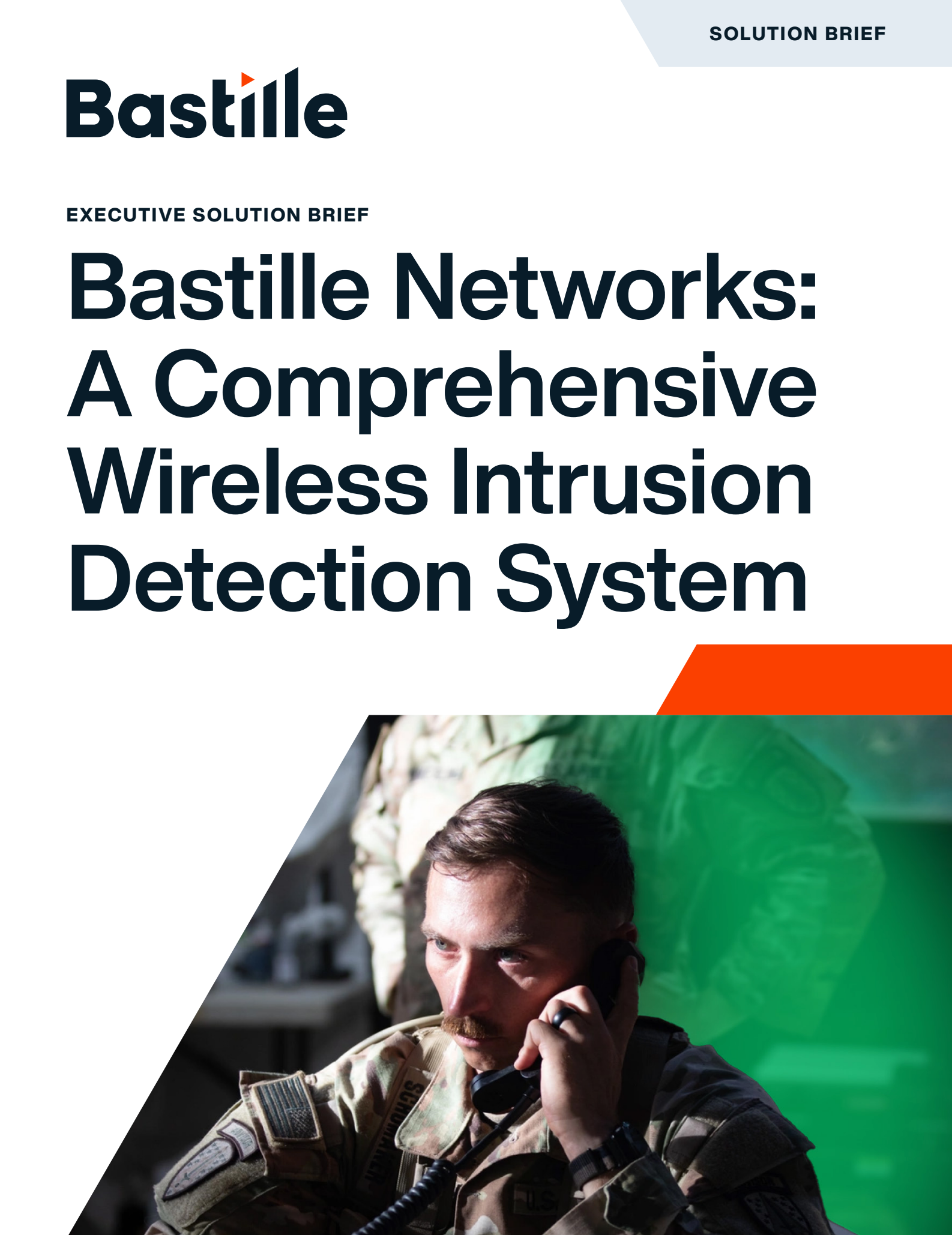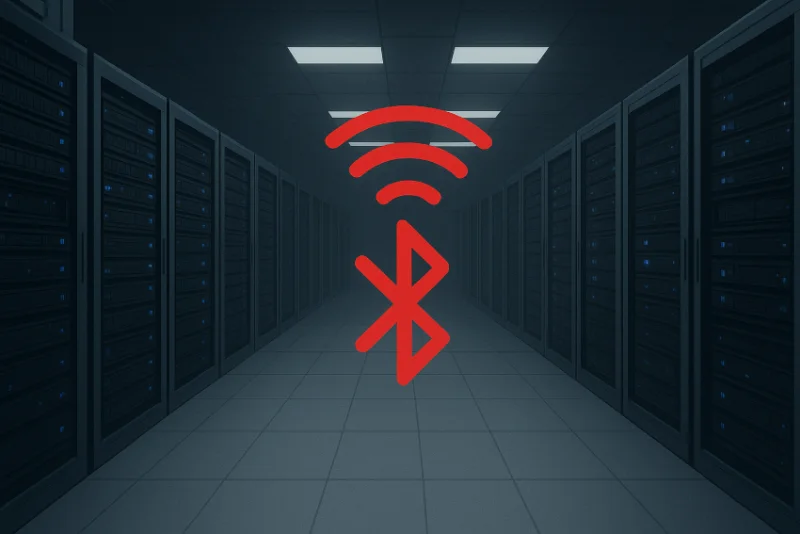
AI, classified, colocation, and hyperscale data centers have become the central infrastructure powering today’s digital and computational ecosystems. These facilities support high-performance computing, model training, and large-scale data processing that drive modern business operations and innovation. To sustain this capacity, they depend on complex wireless and connected systems, including IoT sensors, smart building controllers, robotics, and maintenance devices, that enable automation and efficiency at scale.
This growing reliance on wireless connectivity introduces a new and often invisible attack surface. While traditional data center defenses emphasize physical access controls, network segmentation, and endpoint protection, they frequently fail to monitor the radio frequency (RF) spectrum surrounding data halls and control rooms. This blind spot allows unauthorized devices or rogue transmissions to operate undetected, creating potential entry points for disruption, data leakage, or espionage.
Wireless threat detection addresses this challenge by providing continuous visibility into the RF spectrum. Through passive monitoring and signal analysis, wireless threat detection identifies unauthorized, misconfigured, or suspicious devices operating within or near data centers. For operators managing mission-critical workloads, this capability is now an essential component of operational security, reliability, and compliance.
The Expanding Wireless Attack Surface in Data Centers
Modern data centers depend on wireless connectivity for efficiency and automation. IoT devices monitor temperature, humidity, and power distribution. Wireless handhelds and AR headsets assist technicians. BLE tags track physical assets, and wireless-enabled controllers optimize airflow and energy use. Each device transmits signals across different frequencies, often outside traditional IT oversight.
This complexity creates an opportunity for malicious activity. Attackers can exploit wireless channels to gain persistence, bypass segmentation, or interfere with operations. Common risks include:
- Rogue Access Points: Unauthorized Wi-Fi devices that impersonate legitimate networks, allowing credential theft or unauthorized access
- Evil Twin and Honeypot Networks: Deceptive networks that trick employee or contractor devices into connecting, exposing traffic or credentials.
- Unauthorized Cellular Modems or Gateways: Hidden 4G or 5G links that bridge isolated networks to external systems.
- Bluetooth and BLE Exploits: Attacks targeting IoT sensors, maintenance devices, or asset trackers through insecure Bluetooth channels.
- Shadow IoT Devices: Unregistered or unmanaged wireless equipment introduced by third parties that transmit data without authorization outside of the walls of the data center.
Even one rogue transmitter can jeopardize uptime, expose sensitive data, or disrupt high-value compute workloads. Without real-time visibility into wireless activity, these threats remain invisible until damage occurs.
When Should a Data Center Implement Wireless Threat Detection?
Wireless threat detection becomes most valuable when wireless complexity increases or operational visibility decreases. AI, hyperscale, classified, and colocation data center operators should consider wireless threat detection deployment at the following points in their lifecycle:
1. During Infrastructure Buildout or Expansion
When deploying new clusters or scaling operations, contractors and integrators often use temporary wireless tools or diagnostic devices. Each installation phase expands the RF footprint. Implementing wireless threat detection during expansion projects provides continuous oversight and prevents unauthorized devices from becoming permanent security risks.
2. Integration of Smart Facility and IoT Systems
Data centers increasingly integrate wireless IoT systems for automation, predictive maintenance, and energy optimization. These systems improve efficiency but introduce unmanaged devices that can create hidden vulnerabilities and access to mission-critical systems. Continuous RF spectrum monitoring enables visibility into all wireless communications supporting these systems during their integration.
3. Operation in Multi-Tenant or Colocation Facilities
Shared data center environments can result in overlapping wireless signals from multiple tenants, vendors, and contractors. Wireless threat detection allows each operator to maintain control of its designated RF zones, distinguishing authorized devices from unknown or external transmitters.
4. Compliance, Audit, and Regulatory Requirements
Many data center operators must demonstrate continuous monitoring of communication channels to meet security standards such as NIST 800-53, ISO 27001, and CMMC 2.0. Facilities storing classified information must adhere to even stricter standards. Wireless visibility supports audit readiness and reinforces customer confidence that it has secured and documented all layers of the environment, including wireless, particularly during reaccreditation or recertification.
5. Protection of High-Value Workloads and Data
Data centers can store sensitive data, classified information, and intellectual property. Wireless threat detection helps safeguard these assets from espionage, signal interference, and data leakage by identifying unauthorized or anomalous transmissions in the vicinity of sensitive zones.
6. Incident Investigation and Post-Event Analysis
If an anomaly or outage occurs, wireless threat detection provides forensic insight by maintaining historical RF records. Investigators can determine when and where a device appeared, how long it transmitted, and what activity occurred concurrently, providing valuable context for response and remediation.
Why Wireless Threat Detection Is a Strategic Capability
Wireless threat detection is more than a technical safeguard; it is a strategic enabler of operational assurance. In data centers where uptime and trust are paramount, RF spectrum visibility strengthens resilience and supports long-term efficiency.
Continuous Wireless and IoT Visibility: Comprehensive wireless threat detection solutions monitor wireless activity across a wide frequency range without emitting signals or interfering with existing systems. This passive approach allows for safe, continuous surveillance of all devices transmitting within or near critical environments.
Early Detection and Rapid Response: By monitoring RF patterns and signal behaviors in real time, wireless threat detection enables security teams to detect unauthorized devices before they can establish persistence or cause disruption. Alerts generated by unusual transmissions or rogue networks would allow operators to respond immediately.
Integration with Operational and Security Systems: Wireless visibility complements both cybersecurity and facility management systems. When integrated with Data Center Infrastructure Management (DCIM), Security Information and Event Management (SIEM), or Network Access Control (NAC) platforms, wireless threat detection enriches situational awareness and enables coordinated incident response.
Extending Zero Trust to the Physical Layer: Zero Trust architectures depend on continuous verification of every device and connection. Wireless threat detection extends these principles to the RF domain by validating that every signal emitter is known, authorized, and behaving as expected, closing one of the last unmonitored layers in data center security.
Supporting Forensics and Assurance: Historical RF data collected via wireless threat detection supports audits, compliance documentation, and post-incident reviews. This record of RF spectrum activity provides verifiable evidence that wireless communications are under constant observation and control.
Wireless Threat Detection as a Competitive Advantage
In data centers, availability and trust are differentiators. Facilities that maintain complete visibility into their wireless environments reduce the risk of outages, improve compliance posture, and enhance customer confidence.
Wireless threat detection also contributes to operational excellence by identifying interference sources, unauthorized devices, or malfunctioning sensors that impact performance. In large-scale, automated facilities, even minor wireless disruptions can affect thousands of workloads; early detection prevents minor anomalies from escalating into costly incidents.
As data center infrastructure continues to evolve toward automation and AI-driven management, the wireless spectrum will only grow more complex. Continuous monitoring transforms that complexity into control, enabling secure, predictable, and efficient operation at scale.
Moving from Blind Spots to Awareness of the Wireless Environment
The unseen wireless spectrum surrounding data centers is now a critical layer of operational security. Every unmonitored signal represents a potential path for intrusion, interference, or data exposure.
By adopting continuous wireless threat detection, operators gain real-time awareness of their wireless environment and the ability to detect, investigate, and respond to anomalies before they cause harm. This visibility turns the wireless environment from a vulnerability into a managed security domain.
In the era of high-density computing and global data center infrastructure, awareness of the wireless environment is as essential as network visibility. Wireless threat detection delivers that awareness, safeguarding uptime, protecting data, and reinforcing trust across the world’s most connected facilities.
How Bastille Secures the Wireless Environment around Data Centers
Bastille provides data center operators with comprehensive visibility into their wireless environments through 100% passive monitoring across frequencies from 100 MHz to 6 GHz and Wi-Fi up to 7.125 GHz. Its solution continuously identifies and locates unauthorized, misconfigured, or suspicious devices across Wi-Fi, Bluetooth, cellular, and IoT channels, without disrupting operations or introducing active transmissions. For data centers of all types, Bastille helps protect critical workloads by transforming the wireless environment into a monitored, auditable, and secure domain.




